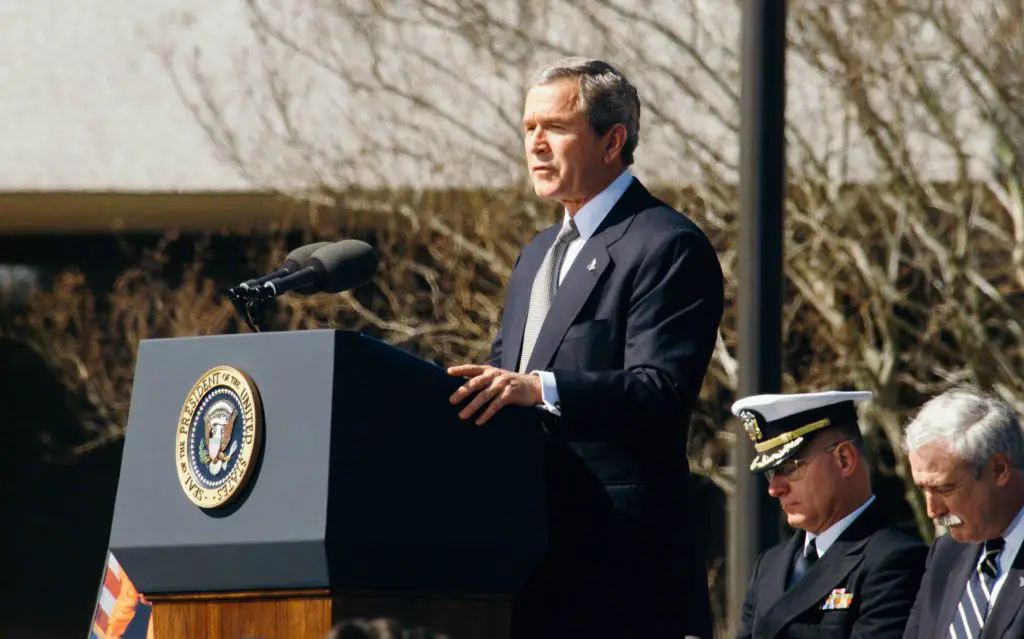A lot of Americans were surprised when Mike Pence was selected as Donald Trump’s running mate this summer. After all, it seems unlikely that someone who held one office would be allowed to hold another—former president George W. Bush, for example, is not eligible to run again as vice president under the 22nd Amendment, which prevents former presidents from serving as VP in the 4 years. Being President or Vice president of a country took lots of effort. In this article we’ll discuss can a Former President be Vice President? Keep Reading…

While the idea of an ex-president serving as vice president seems far-fetched, there’s some precedent for it in American history. It may not be likely, but it’s certainly possible; however, there are some interesting facts about past vice presidents that you may not know. Read on to learn more about this topic and come up with your own opinion.
The 22nd Constitutional Amendment: Why Is It Required?
The 22nd Constitutional Amendment addresses the question of whether a former president can be elected to the office of vice president. This amendment was passed in 1967 and is intended to prevent any possible political gain by former presidents by preventing them from running for both offices at once. It states that if a president has been elected to serve as vice president, he or she may not also seek election to the presidency.
The main problem with this question is that there are many different ways that it can be answered. Some people think that it would be impossible for a former president to become vice president because they would not have the same amount of experience as a current vice president. Others think that it could be possible if the former president had enough political power and experience behind them, which means that they would need their own party’s support before running for office again.
Why Is The 12th Amendment Existent?
The 12th constitutional amendment was passed by the people of the United States to prevent former presidents, vice presidents, and all other high-ranking government officials from holding office after they leave office.
The reason this is important is that there are several ways that a former official can still be involved in politics even though they have retired. For example, they might be able to influence the political process through lobbying or fundraising efforts, or they could become public figures by writing books or giving speeches or interviews. In these cases, it would be easy for them to continue having an impact on politics even though they no longer hold office.
The 12th amendment was ratified in 1804, and it was meant to prevent Thomas Jefferson from becoming president again. The amendment states that no person can be elected president for more than two terms, with exceptions made for war or military succession.
But there is a loophole in this rule: if electors choose to vote for someone who isn’t eligible for election, then they can cast as many votes as they want. And so, every four years, millions of Americans vote for someone who isn’t eligible—and those people are called “faithless electors.”
In 2016, several faithless electors voted for candidates who weren’t even running (like Bernie Sanders), but they did it because they wanted to protest against Hillary Clinton’s candidacy. Because of this loophole, the Constitution was amended so that presidential elections would be decided by popular vote instead of electoral college votes—but we still have faithless electors today!
Do the 12th and 22nd Amendments provide any loopholes that could allow a former president to act as vice president?
While the Constitution does not explicitly mention anyway for a former president to serve in the vice presidency, several loopholes could allow such an arrangement. The first is that presidents can only serve for two terms, so if one of these two terms has already passed by the time a president leaves office, their term would not be valid for serving as vice president. However, this would not prevent a former president from being elected to Congress or another office.
The second loophole is that while they cannot serve as vice president during their presidency, they can still hold other offices and positions in government service. While this may seem odd at first glance, it makes sense when you consider how many people who have served in government tend to take part in multiple positions over their lifetimes—from college professors to local judgeships and even ambassadorships around the world. So yes there is a loophole. The 12th Amendment says that “the President shall be elected by the electors.” The 22nd Amendment says that “[t]he terms of office of the president and vice president shall end at noon on the 20th day of January [1947] after which no person shall serve as president or vice president for more than two consecutive terms.”
If a former president were to take office after the above terms, he would not qualify under these amendments.
Conclusion:
The United States has elected presidents in the past who never held elected office before, like Dwight Eisenhower, who was the supreme commander of the Allied Forces during World War II before becoming president in 1953, or Ronald Reagan, an actor and governor of California before becoming president in 1981. But could they be elected vice president? Before diving into the odds of this possibility, it’s important to know that whether someone has held an elected office or not doesn’t have anything to do with whether they can be vice president.
Frequently Asked Questions
- Which politicians have been in office for decades?
George Bush Sr. was elected in 1988 at age 56 after being governor of Texas since 1985 (he left office).
- Can a former president be vice president?
It violates the spirit of the 22nd Amendment or its actual language.


